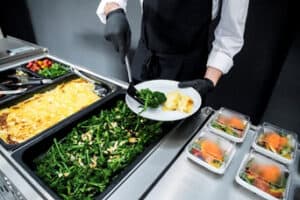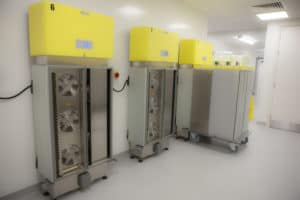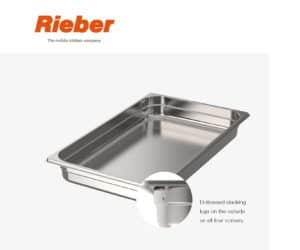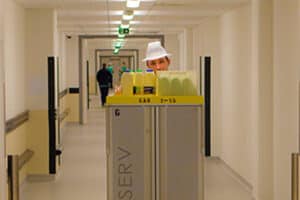The temperature of food served to inpatients is frequently highlighted as one of the biggest problems in patient survey feedback. How can this issue be overcome using modern transportation/food distribution systems?
 “You could write a novel about it. On first sight temperature control appears quite simple. Food not hot enough…problem solved by new equipment and the latest ‘connected’ technology,” says Gareth Newton, Managing Director, BGL Rieber.
“You could write a novel about it. On first sight temperature control appears quite simple. Food not hot enough…problem solved by new equipment and the latest ‘connected’ technology,” says Gareth Newton, Managing Director, BGL Rieber.
“But there are as many variables in the process of serving hot food to patients as there are plots in a shelf full of crime novels. One month after using the new trolley, the patients are still saying, “….food served cold!!”
“The key word is ‘using’… Why are patients saying it is cold when temperature records note the food arrives at ward consistently between 85 and 75 degC?
“You might have exceptionally good equipment but is it being used correctly? Heat could be lost at serving because of warped and wonky GN containers and lids letting all the heat out. Or, by staff leaving lids off and doors open when they should be closed. There might not be enough staff, not enough space, maybe a plate warmer would help…?
“I remember once responding to a call about leaky containers spoiling service, only to find the internal catering delivery driver speeding over speed bumps. He made that set of trollies fly…and so did the lids and the contents!
“My advice to overcome the temperature issue using modern transportation/food distribution systems is to take a critical look at the management issues at ward level and work from the patient backwards. To find out what is going wrong start not in the kitchen, but at the patient.
“It may turn out that you don’t need all new trolleys. A fresh pair of eyes from an outside supplier with expertise will help solve the issues. I have often seen requests for advice on new holding or transport equipment turn into situations where catering managers have been able to re-organise or refresh the service at ward level and, as it turns out, they don’t need new transport equipment at all.
“Re-training and/or adding staff at the service point, acquiring new GN containers and anti-spill lids, new bains maries or installing plate warmers in the ward have all solved ‘cold’ food issues.
“The problem with the modern generation of food distribution equipment is the bewildering choice.
 “There is a minefield of promises to negotiate and, frankly, expert help is needed to find the right solution because every hospital caterer faces differing logistics.
“There is a minefield of promises to negotiate and, frankly, expert help is needed to find the right solution because every hospital caterer faces differing logistics.
“Good suppliers will help in identifying the right system for any one particular hospital – the key is for these suppliers to have experience of all types of solution. New systems can be demonstrated and trialled as necessary and site visits to similar users are never a waste of time. This is especially important when moving to a new style system – bulk to plated for example.
“In some cases, of course, new systems/delivery trolleys are needed. A good rule of thumb whether you are looking at bulk or plated service, regeneration or ward level service is picking the equipment that provides a win/win from the start.
 “Choose GN pans and lids that won’t warp, and which don’t stick together after washing – your colleagues can tell you which last 10 years or more and which are still straight. The latest GN pans can now be bar coded, identifying the contents and where the pan is sent.
“Choose GN pans and lids that won’t warp, and which don’t stick together after washing – your colleagues can tell you which last 10 years or more and which are still straight. The latest GN pans can now be bar coded, identifying the contents and where the pan is sent.
“Mobile insulated food transport boxes need to have proven ability at retaining the right temperatures, but they also need to be easy to clean, easy to move, tough enough to take the knocks and feature castors suitable for the terrain, so the contents are not shaken about too much.
“Probably the biggest single gain from new catering ‘technology’ is the lightweight construction materials now available (from the aircraft industry). This means that trolleys are now lighter and stronger than ever before and can feature, for example, 3 smaller hot cupboards rather than 1 big one.
 “Opening one of 3 smaller doors rather than the large one, to serve one or two meals at a time, conserves heat and serves to protect the food from the frailty of human nature,” comments Newton.
“Opening one of 3 smaller doors rather than the large one, to serve one or two meals at a time, conserves heat and serves to protect the food from the frailty of human nature,” comments Newton.